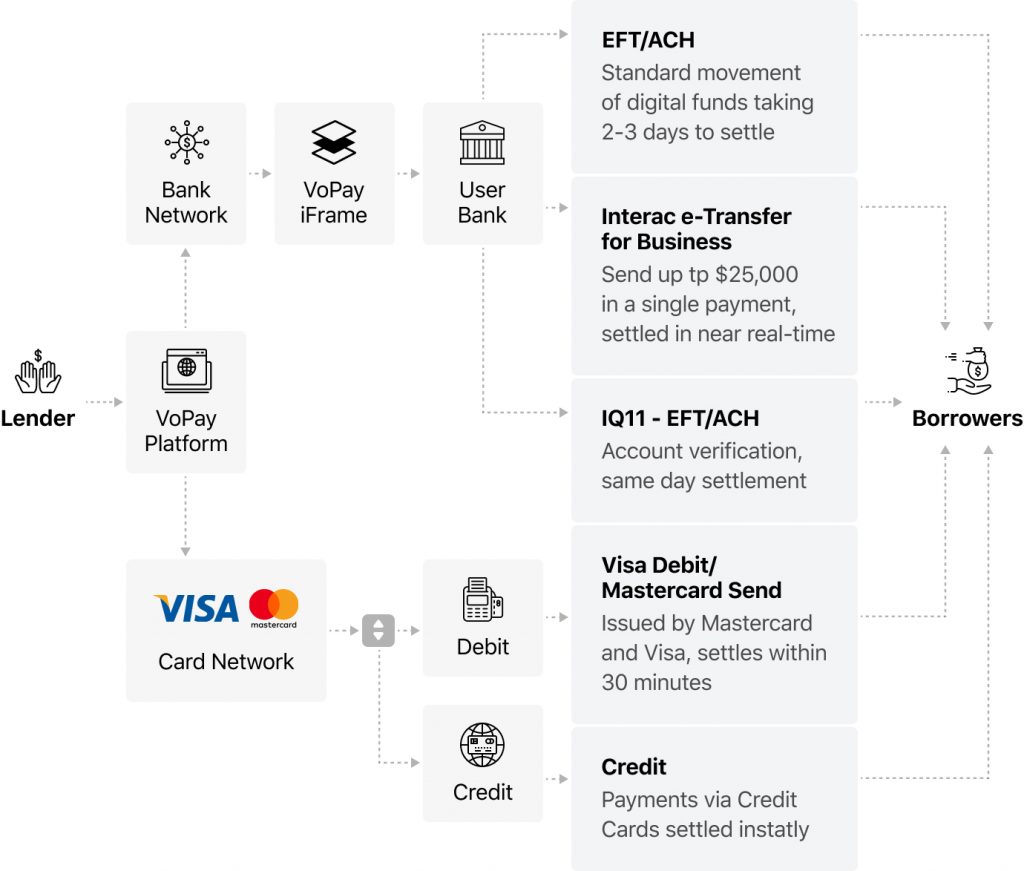A tidal wave of change is reshaping the way lenders think about payments. As the world undergoes a massive shift toward digital, the popularity and uptake of digital payments are undeniable.
Payments are no longer just a back-end function; they have become a front-facing component of everyday business experiences. As a result, companies are putting payments in the spotlight. And the lending industry is fast following suit.
What Are Embedded Payments?
Pros and Cons of Embedded Lending
Embedded payments are a payment processing functionality embedded (or built-in) into software solutions. The functionality helps merchants accept payments within their business management software rather than using a separate system. In other words, with a simple API integration into the check-out process, embedded payments offer a convenient, frictionless experience that customers have come to expect.
For this reason, embedded consumer finance has taken the world by storm. In fact, the embedded payments industry is growing rapidly, and revenues are expected to reach $138 billion in 2026.
Next Generation Payment Solutions Complete the Lending Journey
End-to-end digital lending has finally become more than a buzzword these last few years, with the advent of lending software solutions, allowing lenders to automate the complex manual processes of the past. Loan management platforms deliver a significant increase in organizational time saved and overall customer satisfaction. As the industry moves towards digital finance, integrated payments have become a big piece of the pie. Because, let’s face it, applying through a lending platform software and then transferring to a different platform to pay is a major hassle and a considerable disruption to the customer journey.
Generations Online Banking: How to Adapt Lending for Boomers, Millennials & Gen Z There are no two ways about it; customers expect a fast, easy, and efficient payment experience. In today’s lending industry, embedded payments can mean the difference between a satisfied customer and one who abandons the process in favor of one that is easier to navigate.
Psss… Wanna start lending within 45 days?
Integrated Payments Are the Future of Lending
It all began with Uber, and it has forever changed consumer expectations. When Uber first entered the market in 2010, hailing and paying for a taxi through an app set a revolutionary payment gold standard. By large, still one of the best examples of a flawless, uninterrupted consumer payment journey that provides an exceptional customer experience. Almost all in part due to a modern payment platform integration. Effective embedded payment solutions meet the customer where they are and provide them with the financial option they require, whether a loan, payment program, insurance plan or something else.
Payment Gateway Integration in Lending: How to Choose Once for All
In fact, by 2030, the IDC forecasts that 74% of digital consumer payments globally will be conducted via platforms owned by non-financial institutions.

Payment methods and payment choices have an impact on the effectiveness of a business. Consider, for instance, that about 8 out of 10 consumers report that the speed of money movement positively impacts their willingness to continue to do business with an institution. Time is money and getting money into the hands of those that need it fast is vital. It is necessary for lender survival to speed up the lending application process and all that goes with it. As new payment technology becomes available, it allows for easy collection and automatic payout. Providing users with a positive experience every step of the way, from onboarding to final payment transfers.
4 Ways Integrated Payment Solutions Change Lending
1. Transaction visibility and transparency
Embedded payments provide lenders with invaluable data. Today’s manual payment methods create a labor-intensive process without visibility into a transaction’s status; however, with an integrated payment system, lenders gain transparency and visibility with the transaction data from all parties in the lending process. This means better visibility into cash flow, all the way down to the accounting level.
2. Onboard new clients quickly
Customer Experience in Digital Lending: 5 Onboarding Best Practices
Integrated payment systems deliver a massive overhaul to the onboarding and underwriting processes. Payment facilitators have mastered the underwriting and onboarding processes. This enables them to significantly improve the speed of processes, such as onboarding, far more than traditional payment processors could. It is important to realize that consumers will abandon ship at any point as sound as it gets complicated. In fact, reports from ThePaypers found that more often than not, consumers abandoned ship at 18 minutes and 53 seconds in, a full 7 minutes quicker than the year before
3. Gain the competitive advantage
Digital Payments Trends to Watch Out For in 2023 and BeyondPayment processing is the most common use of the embedded-services model, but it is not the only one. Various value-add services are available, enabling organizations to diversify their offerings and expand into new markets with the click of a button. For example, embedded lending, embedded insurance, and other embedded finance options. These services can raise businesses’ profiles and expand their customer bases. Furthermore, payments embedded in a platform can increase the value of your offering and provide a competitive advantage over other companies. For example, such payments can enable your company to capitalize on market inefficiencies—to gain an edge over competitors. They can convert visitors to repeat customers, providing your company with more revenue.
4. Safer, more secure transactions
Securing consumers while protecting the interests of lenders is a central challenge in the financial sector. Payment technology embedded within loan operating system comes with a layered security approach that uses tokenization and point-to-point encryption to keep sensitive payment data safe and secure. Embedded payment solutions offer a viable way to combat the security issues of storing sensitive data, credit card fraud, identity and information theft.
The integrated payment revolution is well underway, and it’s time for lenders to lead the charge in their respective spaces. By embedding payments with a payment partner such as VoPay, lenders automatically simplify the loans’ issuance and disburse funds to customers upon approval. Collections or recurring payments can easily be automated on our omnichannel payment platform.
The time for lenders to level up their payment stack to stand out in a highly competitive market is now. Payments fuel every business, yet the existing way of managing payments and collections is outdated and inefficient. Embedded payments fix that.
HES FinTech and VoPay Partnership: Lending Powered with Leading-Edge Payment Processing
Empowered by VoPay, lenders can offer efficient and cost-effective embedded real-time funding options while reducing NSFs and returns during payment withdrawals through data-driven EFT and Interac e-Transfers.

To learn more speak with a payment expert today!
Guest post by VoPay.













